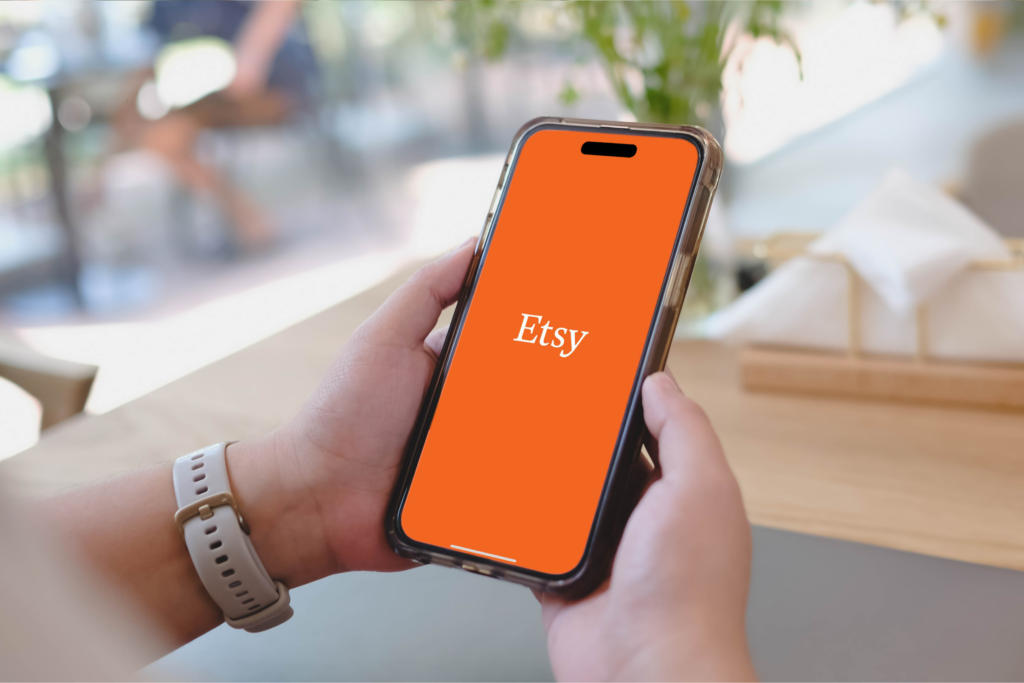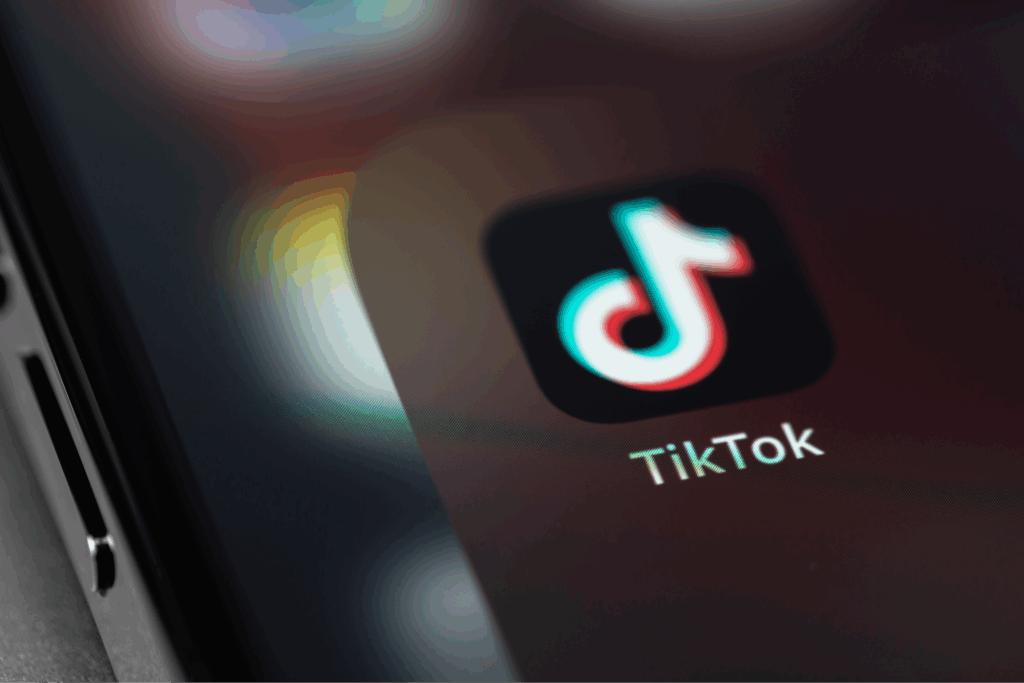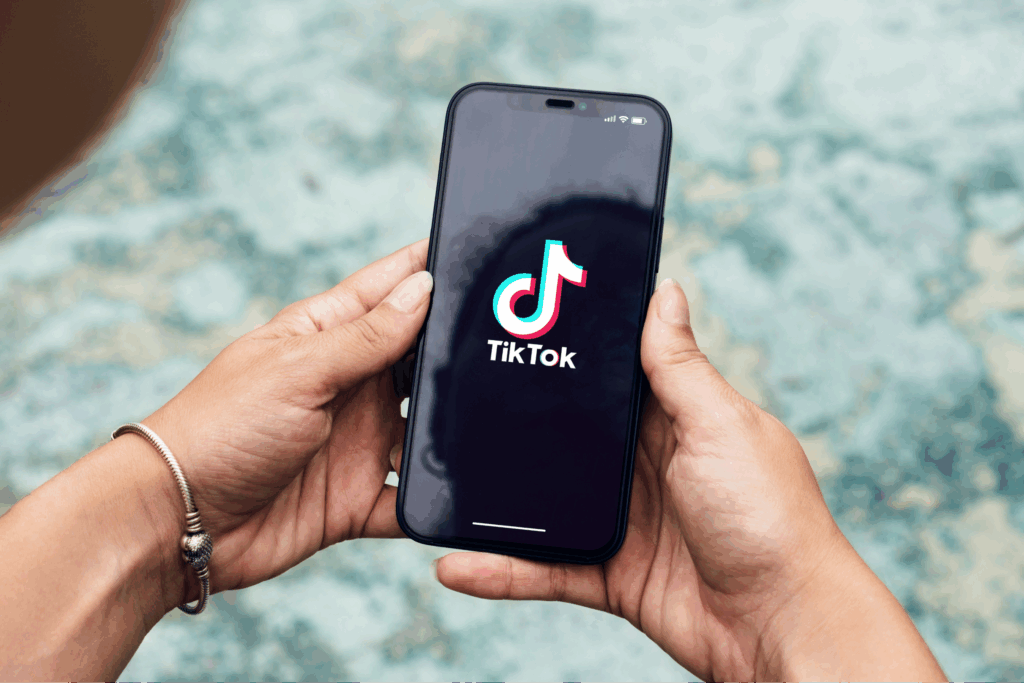Printify + your favorite platform = more sales!
If you’re unsure where to start with Amazon advertising, this guide is for you. From the basics and different ad formats to advanced strategies, we’ll walk you through everything you need to create engaging Amazon ads that lead to sales.
Key takeaways
- Amazon has self-service and managed-service options for advertising campaigns, budgeted as pay-per-click or cost-per-impression ads.
- Sponsored advertising options include Sponsored Products, Sponsored Brands, and Product Display ads with unique targeting to increase sales and brand awareness.
- Dynamic ad formats like video, audio, device, and custom ads offer creative flexibility to advertise on Amazon and third-party platforms.
- Amazon Stores, Posts, and Lives encourage more ad clicks with unique websites, social engagement, and live interactions.
- Optimization tips like using relevant keywords and maintaining message consistency at peak times will maximize brand campaigns and effective marketing.
What is Amazon advertising?

Amazon is among the highest-valued brands worldwide, providing an excellent opportunity to increase sales through targeted ad campaigns.
Amazon has many advertising options to promote your products both on and off the site. These ads appear in Amazon search results, product pages, across the Amazon network, and third-party websites.
Amazon Advertising has two categories:
- Self-service pay-per-click ads (PPC) – Created quickly using an auction-based pricing model to advertise directly on Amazon.
- Managed-service cost-per-impression ads (CPM) – Work under the Amazon DSP for larger campaigns on and off Amazon.
The 3 Amazon sponsored ad types
The Amazon Advertising Console manages Sponsored Amazon ads promoting products and brands through selected criteria to increase visibility and improve the Amazon shopping experience.
There are three Amazon ad types and campaigns – Sponsored Products, Sponsored Brands, and Sponsored Display options.
Sponsored products
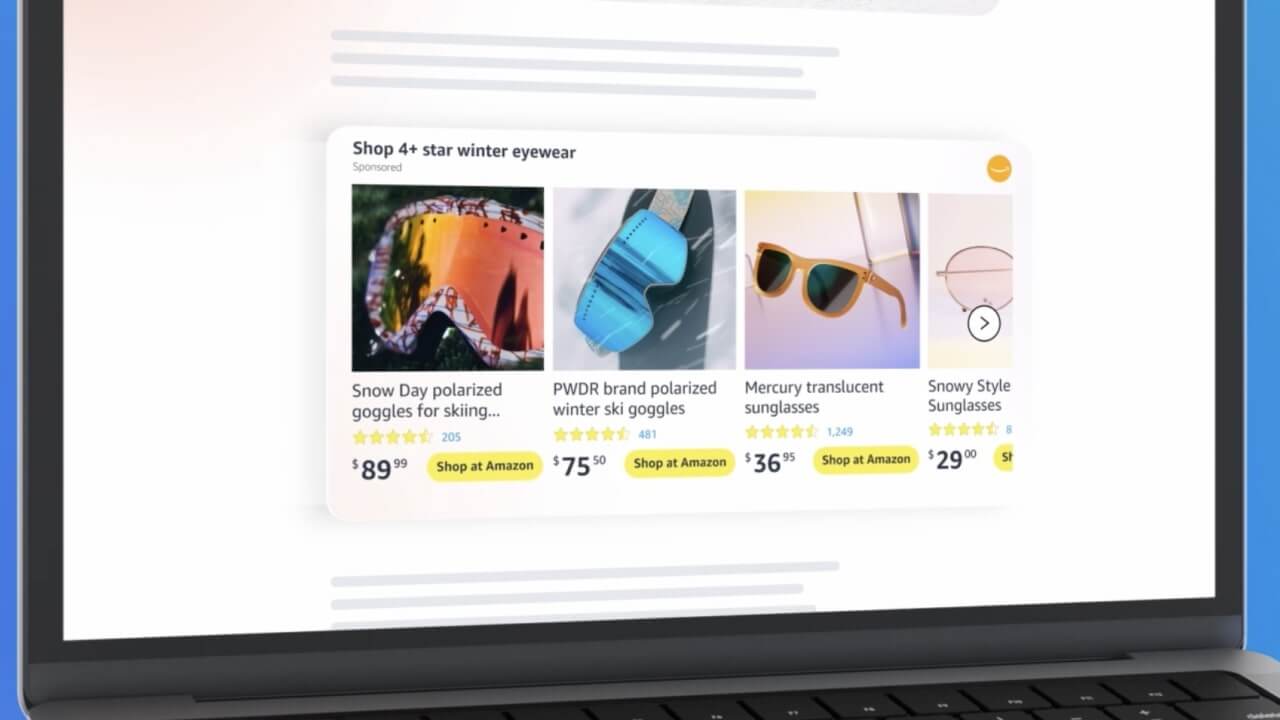
Sponsored Product ads promote individual product listings in Amazon search results and product pages. They drive sales of specific items by using keyword-targeted listings to reach customers actively searching for similar products.
How to create a sponsored product ad campaign:
- Product Selection – Choose the product you want to advertise and ensure it’s eligible for Sponsored Products on Amazon, includes a high-quality image, and has a descriptive listing page.
- Campaign Setup – In the Amazon Advertising Console, navigate to the campaign manager and select Create New Campaign. Choose the Sponsored Product ad type.
- Keyword Targeting – Use automatic targeting based on product information or manual targeting for specific keywords.
- Strategic Bidding – Enter your bid for each keyword. Higher bids can improve the likelihood of your ads being seen. Set your daily budget and the campaign duration.
Sponsored brands
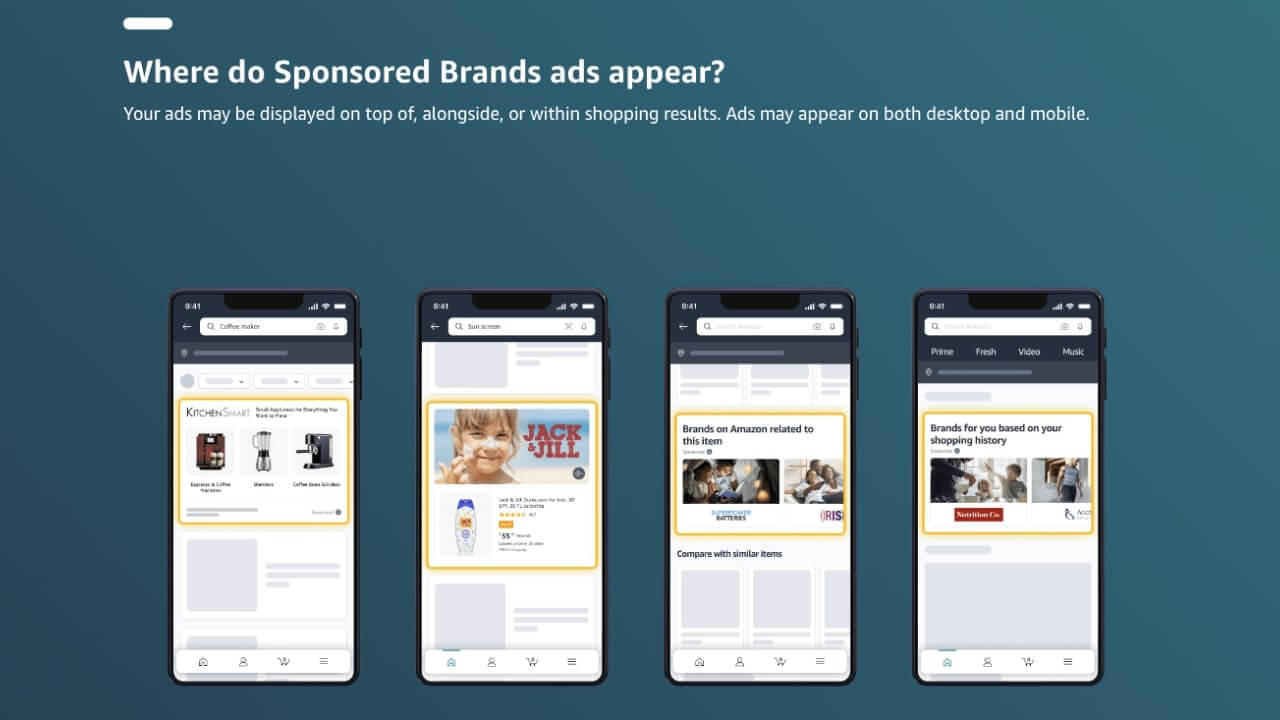
Sponsored Brands displays multiple products in custom ads at the top of Amazon’s search results.
This format increases brand awareness and shows several products, directing shoppers to a landing page or store.
How to create sponsored brand campaigns:
- Brand Registry – Ensure your brand is on Amazon’s Brand Registry.
- Campaign Setup – Create a new Sponsored Brands Campaign, including essential details like name, budget, and duration.
- Ad Content – Design your ad visuals, including your logo, a custom headline, and at least three products to feature in your ads.
- Landing Page – Decide if the ad will direct shoppers to your Amazon store or a customized product page showing your listings.
- Strategic Bidding – Choose keywords to target and set your bids. Focus on brand-related keywords.
Sponsored display
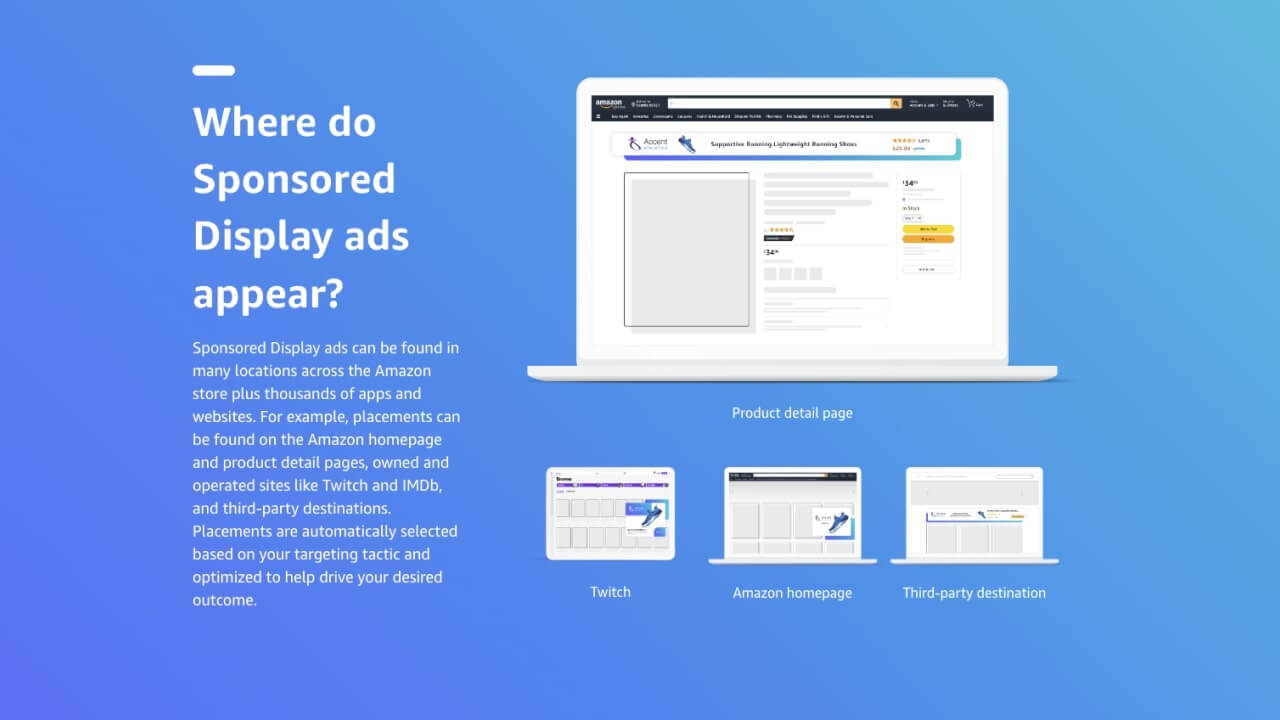
Display ads reach customers on and off Amazon. They’re a powerful tool for re-engaging potential shoppers through different targeting options, such as browsing history.
How to create a Sponsored Display campaign:
- Targeting – Choose a strategy. Keyword-targeted display ads focus on a product or interest. Product targeting lets you place ads on products in related categories, while interest targeting reaches customers based on shopping behaviors.
- Ad Content – Product display ads auto-generate visuals from your product listing info, so ensure your main product image is appealing.
- Budgeting – Set your daily budget. Consider your advertising cost structure, whether it’s based on average cost per click (CPC) or cost per impression (CPM).
- Campaign Insights – Use Amazon’s reporting feature to monitor your campaign’s performance. Check impressions, clicks, and conversion rates.
Why use Amazon product ads?
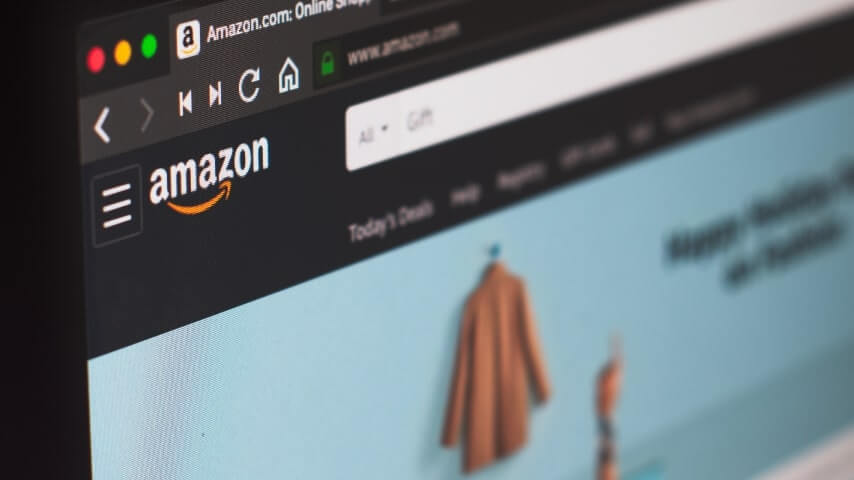
Amazon is a competitive online retailer, so ads are a great tool to help you stand out.
Increased traffic
Amazon ads increase traffic to your product listings by increasing their visibility, leading to more clicks and sales.
More sales
Amazon ads put your products in front of customers who are already interested in what you’re selling, leading to higher conversion rates.
Customer acquisition
Targeting specific demographics with Amazon ads reaches new customers who may not have found your products otherwise.
Customer retention
Targeted Amazon ads remind customers about products similar to previous purchases, encouraging repeat sales and improving your brand’s visibility.
Get an advantage in the online retail platform by using Printify to sell on Amazon without inventory.
How to advertise on Amazon: Amazon ad formats
Amazon Advertising offers several ad formats to help merchants connect with their audiences. This is done through self-service for Amazon sellers or managed service for eCommerce marketers.
Here’s a breakdown of each ad format to choose which fits your business best.
Display ads
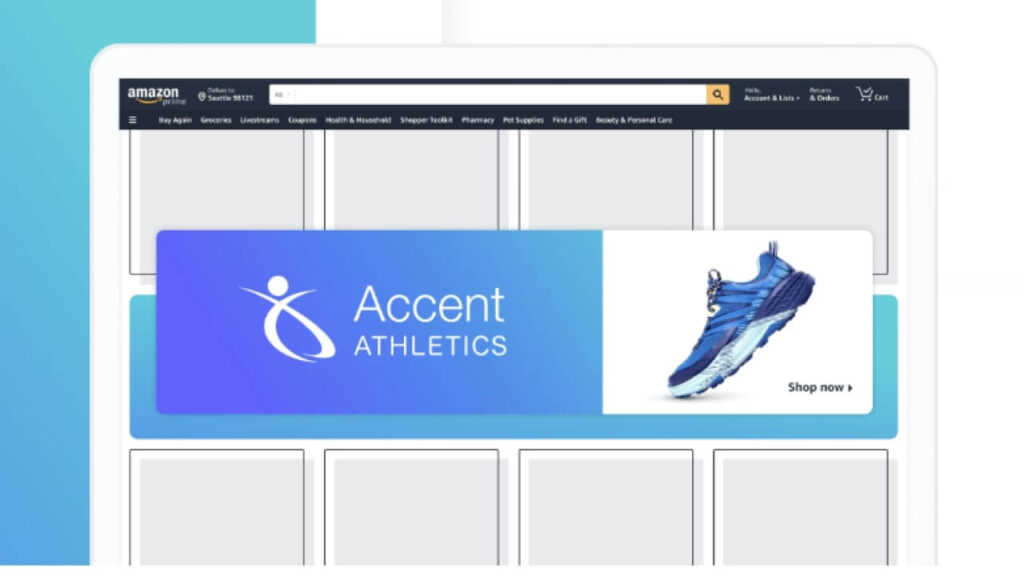
Display ads appear in search results and reach audiences across Amazon devices.
Advantages of display ads include:
- Multichannel Options – Connect with customers on Amazon properties, devices, and premium third-party content, as well as through other marketing efforts.
- Accessible Advertising – Product display ads are helpful for brands, sellers, agencies, and businesses that don’t sell on the Amazon online retail platform.
- Direct Customer Interaction – Be present where customers stream, shop, browse, or game, increasing brand interactions for regional and global audiences.
- Cost-effective Campaigns – Enjoy ad spend and targeting flexibility, maximizing budget efficiency and operational testing.
Your ad visuals will significantly impact your success. They need to appeal to potential customers and give them enough information to make an informed purchase.
- Choose an Image Style – Decide between product images that show the item in more detail or a lifestyle image to show relatability.
- Craft a Compelling Call to Action (CTA) – Guide the customer through their journey with actions like “See Offers” to promote interaction.
- Include Brand Imagery – Use high-quality images of your logo and products as prominent ad features.
- Write Clear Copy – Describe products in detail so customers know exactly what they’ll receive. Use language that piques customers’ interest.
Video ads
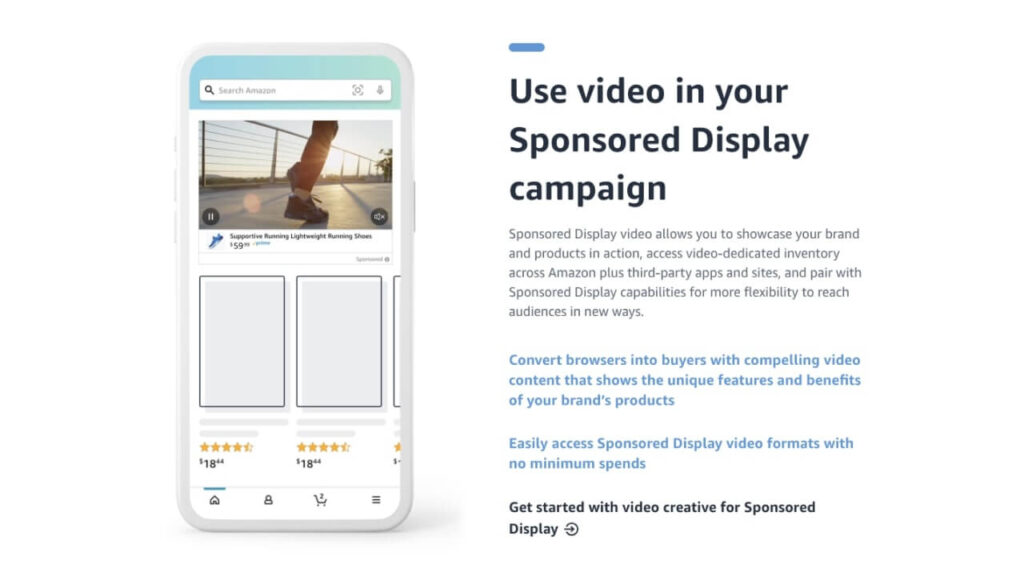
Amazon video ads appear on sites like Amazon Store, Prime Video, and Twitch platforms. They have a higher engagement rate than regular images, and multi-video ads have a 73% higher purchase rate than single-video campaigns.
When producing videos for your ad campaigns:
- Focus on Quality – High-quality production significantly affects viewer perception.
- Keep it Concise – Shorter videos maintain engagement, so keep the length under 2 minutes.
- Add a CTA – Encourage the viewer to respond by giving them the next steps.
Self-service packages for Amazon video ads require a minimum budget of $10k. Set and manage your advertising costs through Amazon DSP.
Audio ads

Audio ads use Amazon Music, podcast sponsorships, and other audio platforms to reach multitasking audiences. They range from 10 to 30 seconds and are easier to produce than video ads.
When creating audio for your ad campaigns:
- Use Storytelling – Engage listeners by telling a story they’ll relate to rather than using a blunt sales pitch.
- Maintain Clarity – Explain your product’s benefits within the first few seconds.
- Produce High-Quality Audio – Avoid background noise, fuzzy audio, differing volumes, and anything that could make your ad hard to listen to.
Device ads
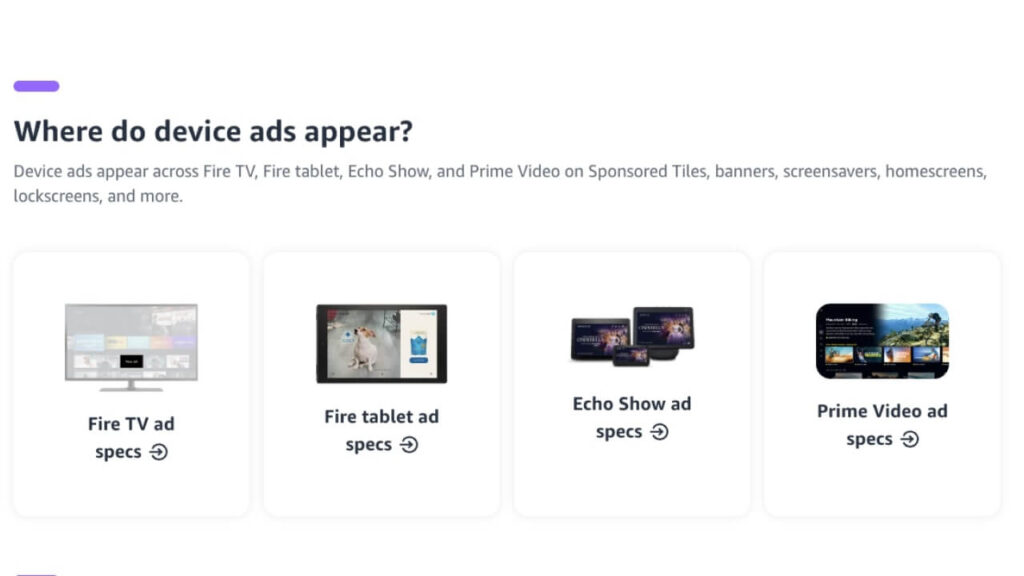
Device Ads use Amazon’s network of connected devices, including Echo speakers, Fire Tablets, and Fire TV. Some device ads let listeners respond verbally, making it even easier for customers to view or buy your products.
Creating your campaign with device ads involves:
- Understanding Each Device – Make sure your content fits the device you’re advertising on.
- Including Interactive Elements – Use a script that makes it easy for customers to respond.
- Following Quality Standards – Include images and audio that meet Amazon’s content standards.
Costs vary depending on the device and ad complexity. There is no minimum spend for self-service campaigns, but managed-service campaigns require a $50k minimum.
Custom ads
Custom Amazon ads offer creative freedom, letting brands create unique and immersive advertising experiences that go beyond standard ad formats. This is a direct collaboration with Amazon services to construct branded campaigns through their Brand Innovation Lab.
Work with Amazon experts, like storytellers, strategists, creatives, and engineers, to provide a more unique ad experience.
Set up custom ad solutions with your best goals and ideas:
- Brainstorm – Come up with a creative concept that aligns with your brand identity. Set up campaign goals that are both doable and optimistic.
- Collaborate with Amazon – Work closely with Amazon’s advertising team to develop and execute your custom ad.
- Maintain Quality Compliance – Ensure your ad is eye-catching and adheres to Amazon’s advertising policies and quality standards.
Cost vary widely because custom ads are tailored to your specific campaign needs. Plan with Amazon’s team to outline precise budget requirements.
Amazon branding features
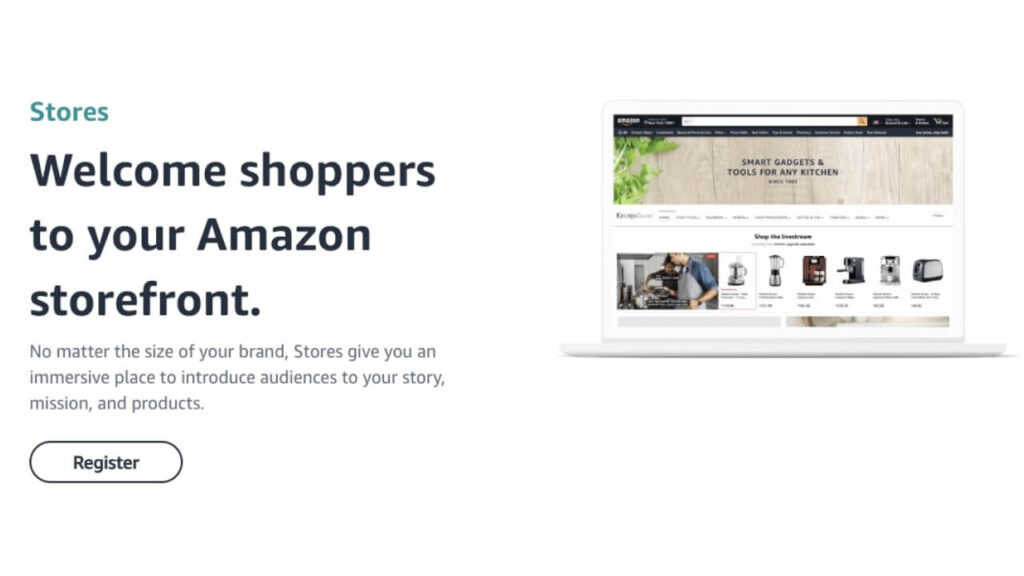
Branding makes your business more memorable to customers. Use Amazon ads branding features to build a brand your customers will connect with.
Stores
Amazon Stores lets brands design multi-page profiles on the platform to display product pages and customer reviews. Use ads to bring customers to your Store page to find more details about your products and other information they may want before purchasing.
Posts
Amazon Posts is a free marketing tool that lets brands use photos to engage shoppers as they browse through the online retailer. Use it to create posts on a product detail page and in search feeds.
Amazon Live
Amazon Live lets brands engage with customers through live streaming. Users can purchase featured products right after seeing them on screen.
Brands can show their products in action, host Q&A sessions, and interact with viewers in real time, adding a personal touch to the shopping experience.
Tips for optimizing your Amazon ad campaigns

Stand out in a crowded retail platform by adjusting your Amazon advertising strategy frequently. There are a few ways to improve your Amazon ads and their performance.
Use relevant keywords
Incorporate long and short-tail keywords around your target keyword to match product features your potential customers will likely search for. Promote keyword-targeted ads to boost brand visibility.
Stay consistent
Maintain consistent brand messaging across your Amazon ads and product listings to increase customer recognition. Use your brand’s Amazon URL to view traffic analytics and the reporting tool to improve your message.
Run ads during peak conversion times
Schedule your ads to run when your target audience is most active. View traffic analytics to adapt to organic rankings and increase the chances of ad clicks and purchases.
Use negative targeting
Use Amazon’s negative targeting feature for keywords in search results. It helps weed out irrelevant traffic, improving your ad performance by attracting the right leads.
FAQ
Register your brand on Amazon, log into the Amazon Advertising Console, and select the desired ad type, like Product Display ads, Sponsored Product ads, or Sponsored Brand ads.
Set up your Amazon ads campaign by choosing your target audience, budget, and format. Then, use Amazon’s tools to measure the effectiveness of your ads and make changes where necessary.
Amazon Ads is available to registered sellers, vendors, and agencies. It provides a platform to reach audiences effectively across Amazon and third-party sites.
The cost for Amazon ads varies based on the ad type and campaign settings. Sponsored Displays, Sponsored Brands, and Product ads operate on a self-service, cost-per-click model.
Display, audio, and video ads are priced based on the cost-per-millie (CPM) or per thousand impressions. This managed-service option typically requires a minimum ad spend of $50,000.
Summary
Amazon marketing services offer a powerful platform for growing brand visibility and driving sales through targeted ad campaigns.
Navigate Amazon advertising effectively by using a strategic approach to ad selection and advertising cost. Continuously evaluate your ad performance and make adjustments where necessary to keep your business on track for success.





